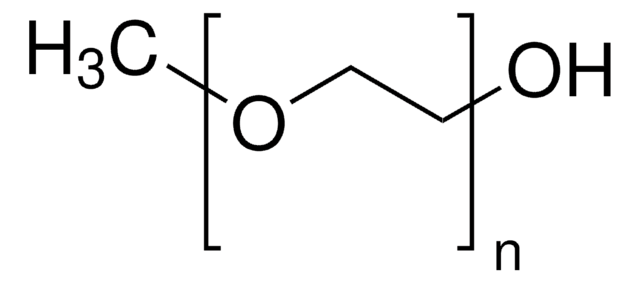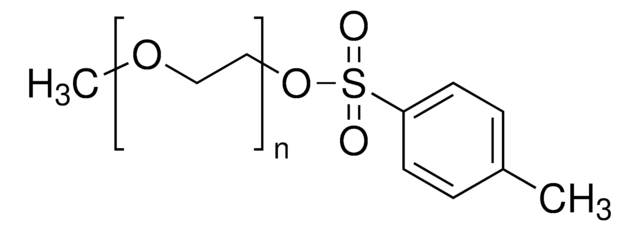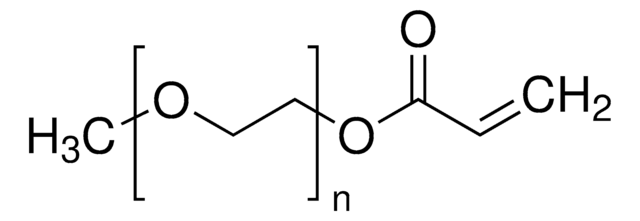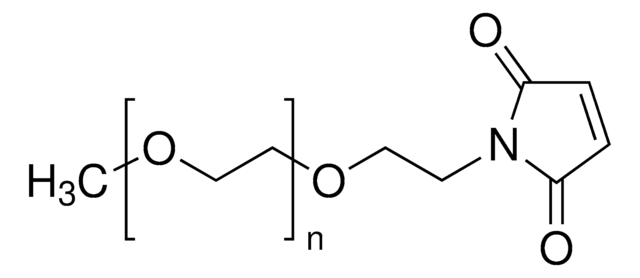202495
Poly(ethylene glycol) methyl ether
average MN 750, methoxy, hydroxyl
Synonym(s):
Polyethylene glycol, Methoxy poly(ethylene glycol), Polyethylene glycol monomethyl ether, mPEG
About This Item
Recommended Products
Product Name
Poly(ethylene glycol) methyl ether, average Mn 750
vapor density
>1 (vs air)
vapor pressure
0.05 mmHg ( 20 °C)
form
paste
solid
mol wt
average Mn 750
refractive index
n20/D 1.459
viscosity
10.5 cSt(210 °F)(lit.)
transition temp
Tm 30 °C
density
1.094 g/mL at 25 °C
Ω-end
hydroxyl
α-end
methoxy
SMILES string
O(CCO)C
InChI
1S/C3H8O2/c1-5-3-2-4/h4H,2-3H2,1H3
InChI key
XNWFRZJHXBZDAG-UHFFFAOYSA-N
Looking for similar products? Visit Product Comparison Guide
Application
- As a chain transfer agent to synthesize amphiphilic block copolymers by metal-free ring-opening oligomerization.
- As a precursor to prepare retinoic acid-polyethylene glycol nanoassembly as an efficient drug delivery system.
- To prepare diblock copolymer with polylactic acid, which can be applied in the field of tissue engineering and drug delivery.
Storage Class Code
10 - Combustible liquids
WGK
WGK 1
Flash Point(F)
359.6 °F - closed cup
Flash Point(C)
182 °C - closed cup
Personal Protective Equipment
Choose from one of the most recent versions:
Already Own This Product?
Find documentation for the products that you have recently purchased in the Document Library.
Customers Also Viewed
Articles
Fouling Resistant Biomimetic Poly(Ethylene Glycol) Based Grafted Polymer Coatings
Devising biomaterial scaffolds that are capable of recapitulating critical aspects of the complex extracellular nature of living tissues in a threedimensional (3D) fashion is a challenging requirement in the field of tissue engineering and regenerative medicine.
Our team of scientists has experience in all areas of research including Life Science, Material Science, Chemical Synthesis, Chromatography, Analytical and many others.
Contact Technical Service




